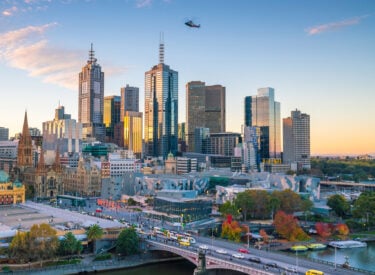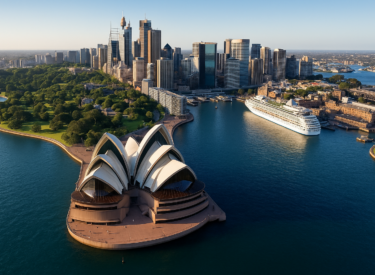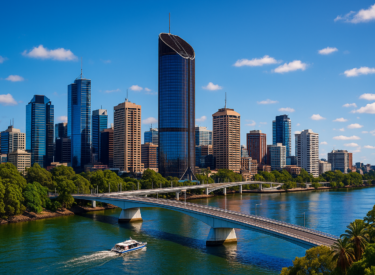
Key takeaways
According to the latest ABS data, there has been a significant surge in public sector employment, driven largely by the current government's initiatives. This has put upward pressure on prices and strained the RBA's ability to control price rises.
Government spending can be highly inflationary because it injects additional demand into the market. The surge in public sector employment is just one aspect of this broader issue. Increased government spending will only make inflation worse if it is not matched by corresponding increases in productivity or supply.
The risks of a wages-price spiral include rising wages leading to higher consumer spending and higher prices, which can be difficult to break and pose a significant challenge to the RBA's goal of bringing inflation back to manageable levels.
To navigate these challenges, a coordinated approach between fiscal and monetary policy is essential, but an election year means that the government may need to reconsider the pace and scale of public sector expansion and look at ways to increase productivity in tandem with spending increases.
The Australian economy has been a topic of intense scrutiny in recent times, particularly around the challenges the Reserve Bank of Australia (RBA) faces in taming inflation.
While inflation typically involves complex interactions between supply, demand, and monetary policies, recent data suggests that government spending and job creation in the public sector are adding fuel to the fire.
A surge in public sector employment
According to the latest ABS data, there has been a significant surge in public sector employment, driven largely by the current government’s initiatives.
The Labor government’s policies have led to a boom in job creation within the public sector, contributing to an overall increase in employment figures.

Public sector jobs, funded by government spending, add a direct demand component to the economy.
When the government hires more workers, it not only increases overall employment but also raises the aggregate demand for goods and services, putting upward pressure on prices.
This is particularly problematic in an environment where inflation is already a concern, as it further stretches the RBA’s ability to control price rises through conventional monetary policy tools.
Government spending and its inflationary effects
Government spending, particularly in large amounts, can be highly inflationary.
When the government pumps money into the economy—whether through infrastructure projects, increased public sector wages, or expanded public services—it effectively injects additional demand into the market.
If this demand outpaces the supply of goods and services, prices inevitably rise.
The surge in public sector employment is just one aspect of this broader issue.
Increased government spending in areas such as healthcare, education, and social services, while obviously beneficial in many respects, only makes inflation worse if it is not matched by corresponding increases in productivity or supply.
This is especially true if the spending is funded by borrowing, which can drive up interest rates and put further pressure on inflation.
And unfortunately, we have become less productive over the last little while… but that’s a whole different argument.
The RBA’s struggle: balancing growth and inflation
The RBA’s primary tool for controlling inflation is through adjusting interest rates.
By raising rates, the RBA aims to cool down consumer spending and borrowing, thus reducing the overall demand in the economy.
However, when government spending and public sector job creation are at high levels, this complicates the RBA’s efforts.
Higher public sector employment can lead to increased consumer spending because these workers now have income to spend in the economy.
This scenario makes it harder for the RBA to achieve its inflation targets because monetary policy alone can’t counteract the expansive fiscal measures of the government.
In essence, while the RBA is putting its foot on the brakes to slow down the economy, while government spending is simultaneously pressing down on the accelerator.

The risks of a wages-price spiral
Another concern is the potential for a wages-price spiral, where rising wages—particularly in the public sector—lead to higher consumer spending, which then drives prices up further.
As wages increase, workers demand higher pay to keep up with inflation, leading businesses to raise prices to cover the increased labour costs.
This cycle can be difficult to break and poses a significant challenge to the RBA’s goal of bringing inflation back to manageable levels.
Public sector wages tend to set a benchmark that can influence wage negotiations across other sectors, contributing further to inflationary pressures.
If these wages grow significantly due to government hiring sprees, it can create ripple effects throughout the economy, making inflation more entrenched and harder to combat with interest rate adjustments alone.
What can be done?
To navigate these challenges, a coordinated approach between fiscal and monetary policy is essential.
Of course, this is an election year, so the government is keen to put on a good show helping as many Australians as it can, instigating more infrastructure projects and talking the talk!
Having said that, the government may need to reconsider the pace and scale of public sector expansion and look at ways to increase productivity in tandem with spending increases.
This might involve investing in areas that boost the supply side of the economy, such as infrastructure that improves business efficiency or training programs that upskill the workforce to fill gaps in high-demand industries.
Additionally, targeted spending cuts or reallocations that don’t stoke inflation could also help.
For example, rather than across-the-board increases in public sector jobs, the government could focus on areas that directly support long-term economic growth without immediate inflationary impacts.
Again, being an election year, I don’t see this happening.

Conclusion
The interplay between government-created jobs, spending, and inflation is a delicate balancing act that significantly impacts the Australian economy.
While increasing employment and expanding public services have their merits, they also pose risks in an already inflationary environment.
The RBA’s task of managing inflation is made more difficult by these dynamics, highlighting the need for thoughtful, coordinated policy responses that consider both immediate economic needs and long-term stability.
Ultimately, managing inflation effectively requires a balance of fiscal restraint, targeted spending, and supportive monetary policies that work in tandem rather than at cross-purposes.
As the RBA continues its battle against inflation, admitting the role of government spending and public sector employment will be crucial in achieving a stable and prosperous economic future for Australia














